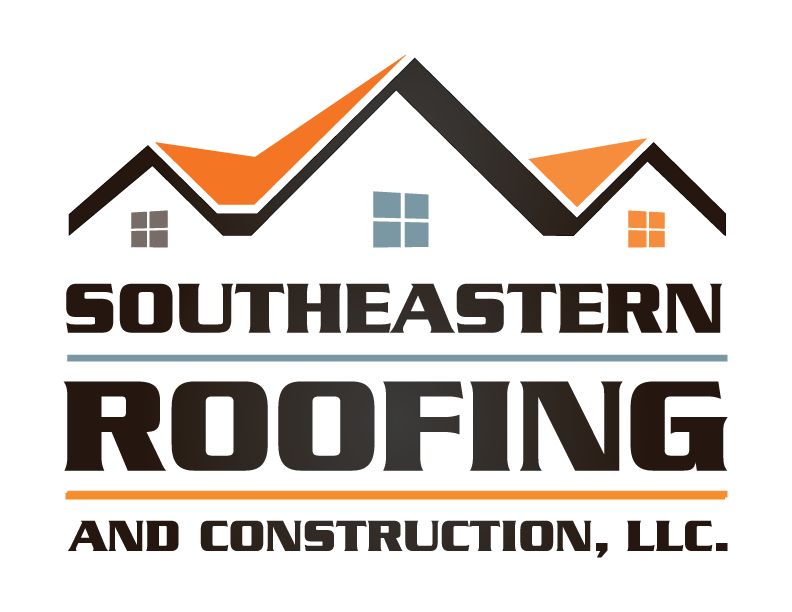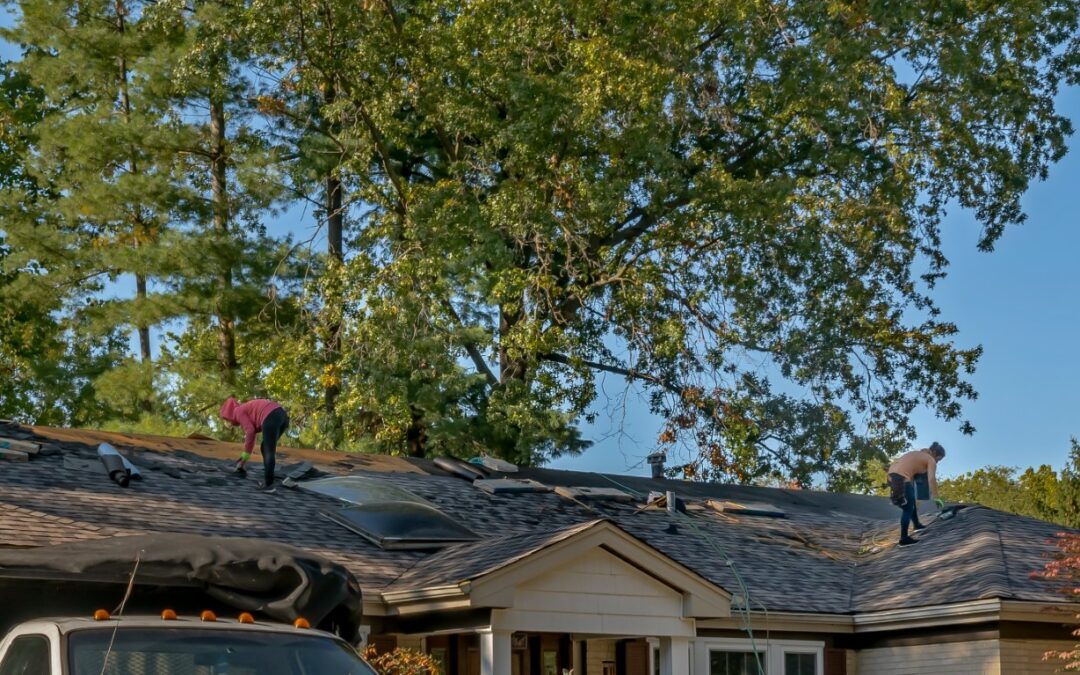Are you ready to tackle your roof replacement inspection? We’ve got you covered with six essential tips to help you prepare.
- Clearing debris
- Checking for leaks
- Trimming branches
These are just a few tasks on our list. And don’t forget to secure loose shingles and inspect the attic for water damage. We’ll also guide you in preparing the necessary documents. With our tips, you’ll be well-prepared and confident for your roof replacement inspection.
Let’s get started!
Key Takeaways
- Research and understand local building codes and regulations
- Clear the roof of the debris before the inspection
- Regularly inspect and address leaks and damage
- Trim overhanging branches to prevent roof damage and enhance safety
Know Your Inspection Requirements
We need to familiarize ourselves with the specific inspection requirements for our roof replacement project. Understanding the inspection guidelines is crucial to ensure a successful and hassle-free process.
The first step is to research and gather information about the local building codes and regulations in our area. These guidelines will outline the specific requirements that must be met during the inspection. It’s essential to have a thorough understanding of these requirements to avoid any potential delays or issues.
Additionally, reaching out to professionals, such as roofing contractors or building inspectors, can provide valuable insights and clarification regarding the inspection process.
Clear the Roof of Debris
To ensure a thorough roof replacement inspection, we should begin by clearing the roof of any debris. Clearing debris is an essential step in roof maintenance, as it allows for a comprehensive inspection of the roof’s condition.
Debris such as leaves, twigs, and branches can accumulate over time, creating potential hazards and concealing underlying issues. By removing this debris, we create a safer and more accessible environment for the inspection process.
Additionally, clearing the roof of debris improves the accuracy of the inspection, as it allows for a better assessment of the roof’s structural integrity and potential damage. Regularly clearing debris not only facilitates inspections but also helps in preventing future problems, ensuring the longevity and performance of the roof.
Check for Leaks and Damage
After clearing the roof of debris, we now need to check for leaks and damage. Regular roof maintenance is crucial to prevent costly repairs in the future.
Start by inspecting the attic for any signs of water stains or dampness, as this could indicate a leak. Next, examine the roof surface for missing or damaged shingles, cracked flashing, or loose seams. Pay close attention to the areas around chimneys, vents, and skylights, as these are common trouble spots.
If you notice any issues, it’s important to address them promptly to avoid further damage. Contact a professional roofer for roof repair if necessary. By conducting regular inspections and addressing any problems, you can prolong the lifespan of your roof and ensure its optimal performance. To continue with our roof inspection, the next step is to trim overhanging branches.
Trim Overhanging Branches
Before starting the roof replacement inspection, we need to address the issue of overhanging branches. Trimming these branches is essential to prevent potential roof damage and ensure the safety of both the workers and the homeowners.
Prevent Roof Damage
We should trim overhanging branches to prevent roof damage. Overhanging branches can pose a significant threat to the integrity of your roof, especially during extreme weather conditions. Strong winds can cause these branches to rub against the roof, leading to shingle damage and potential leaks. Additionally, falling branches can puncture the roof, resulting in costly repairs. By trimming overhanging branches, you can minimize the risk of such damage and ensure the weatherproofing techniques implemented on your roof remain effective.
Regular roof maintenance is essential for protecting your home from the elements and extending the lifespan of your roof. Taking this proactive approach won’t only protect your roof but also enhance the safety and security of your home. Now, let’s move on to the next section and discuss how to ensure safety measures during the roof replacement inspection.
Ensure Safety Measures
Trimming overhanging branches is an important step in ensuring the safety of our roof during the replacement inspection. Overhanging branches can pose a significant risk to the integrity of the roof and the safety of those working on it. By trimming these branches, we can prevent them from falling onto the roof and causing damage or injury.
It’s essential to take safety precautions during roof replacement to minimize potential hazards. Before starting the inspection, thoroughly inspect the area surrounding the roof for any overhanging branches. Use proper tools such as pruning shears or a chainsaw to carefully trim these branches, ensuring they’re cut back a safe distance from the roof.
Regularly inspect the roof for any new growth and repeat the trimming process as needed. By taking these precautions, we can create a safer environment for the roof replacement process.
Secure Loose Shingles and Tiles
To ensure a thorough roof replacement inspection, it’s important to address any loose shingles and tiles that may compromise the integrity of the structure. Regular roof maintenance is crucial for the longevity of your roof and protecting your home from water damage. Loose shingles and tiles can lead to leaks and further damage if left unattended. By securing these loose components, you can prevent water from seeping into your home and causing potential structural issues. Weatherproofing techniques, such as using roofing cement or adhesive, can be employed to secure loose shingles and tiles.
It’s essential to inspect your roof regularly and address any loose components promptly to maintain a safe and durable roof. By taking these preventive measures, you can ensure the longevity of your roof and protect your home from potential water damage. In the subsequent section, we’ll discuss the importance of inspecting the attic for signs of water damage.
Inspect the Attic for Signs of Water Damage
When inspecting the attic for signs of water damage, we need to be on the lookout for several key indicators. First, we should check for the presence of mold and mildew, as they’re often a clear sign of moisture infiltration. Additionally, we need to examine the area for any leaks or stains, as these could indicate a potential issue with the roof. Lastly, we must pay attention to any signs of rotting or decay, as these can be telltale signs of long-term water damage.
Mold and Mildew
Before starting our roof replacement inspection preparation, we must inspect the attic for signs of water damage caused by mold and mildew. Mold and mildew can pose serious health risks, so it’s crucial to identify any potential issues early on. Mold prevention is essential to maintain a safe and healthy living environment.
When inspecting the attic, be on the lookout for any musty odors, discolored patches on the walls or ceiling, or visible mold growth. Check for any signs of water leaks or stains, as these can indicate a problem with the roof. If you notice any of these signs, it’s important to address the issue promptly to prevent further damage and potential health hazards. Transitioning to the next section, let’s now explore how to inspect for leaks or stains.
Leaks or Stains
Now, as we continue our roof replacement inspection preparation, let’s turn our attention to inspecting the attic for signs of water damage, specifically leaks or stains. This step is crucial because identifying any water damage in the attic can help us determine the extent of the problem and plan for necessary roof repairs.
When inspecting the attic, look for any dampness or discoloration on the ceiling or walls, as these could indicate leaks or water infiltration. Additionally, check for any musty odors, as they can be a sign of hidden water damage. If you notice any leaks or stains, it’s important to address them promptly to prevent further damage and potential rotting or decay. Now, let’s move on to the next section to discuss how to inspect for rotting or decay.
Rotting or Decay?
To inspect the attic for signs of water damage, we should start by checking for any rotting or decay. Rotting is a common issue that can occur due to leaks or excessive moisture. It’s important to address this problem promptly to prevent further damage to your roof and home.
To prevent rotting, regular maintenance is essential. Here are some maintenance tips to keep in mind:
1. Inspect the attic regularly for any signs of water damage, such as dark stains or discoloration on the wood.
2. Look for any soft or spongy areas on the attic floor or roof deck, as this could indicate rotting.
3. Check for any mold or mildew growth, as this can also be a sign of excessive moisture.
4. Ensure proper ventilation in the attic to prevent the buildup of moisture.
5. Repair any leaks or damaged areas on the roof promptly to prevent water from entering the attic.
Prepare Necessary Documents and Records
As we embark on the process of roof replacement inspection preparation, it’s imperative to gather and organize all necessary documents and records. To ensure a smooth and efficient inspection, we must review our insurance policies to understand the coverage and requirements for roof replacement. This will help us determine if any specific documentation is needed for the inspection.
Additionally, gathering receipts for previous repairs or maintenance work done on the roof is crucial. These receipts serve as proof of the work done and can help assess the overall condition of the roof.
Conclusion
In conclusion, by following these six essential tips for roof replacement inspection preparation, you can ensure a smooth and successful process. Knowing your inspection requirements, clearing debris, checking for leaks and damage, trimming branches, securing loose shingles, and inspecting the attic for water damage are all crucial steps. By taking these measures, you can be confident in the safety and durability of your new roof, protecting your home from the elements.

